Romans
What the impact of Roman rule was in the Kirklees area
The Brigantes
Before the arrival of the Romans, Kirklees was occupied by different tribes known as the Brigantes, or "hill-dwellers". They would have lived in small farming communities, with no towns. The farmers grew crops and reared animals. No local farms have been fully excavated in Kirklees, but there have been some along the Calder Valley.
When the Romans first arrived in Britain, the Brigantian queen of the area, Cartimandua, made an alliance with the Romans. She faced a rebellion, led by her ex-husband Venutius, and was deposed in 69 AD. In 71 AD, the Romans put down the rebellion and then went on to conquer the rest of northern Britain.
We can see evidence of the disruption and fear caused by the Roman conquest through coin hoards at Honley and Lightcliffe. These were valuables hidden soon after 70 AD, and were never recovered. It includes a mixed group of old Roman silver and newer bronze coins. There are also coins of the Coritani tribe from the south-east, and Roman items. It could be from people who lived under Roman rule and then fled, or it could be items taken by the Brigantes after a raid on Roman territory.
The Romans in Huddersfield
For many of the people in the region life must have changed little after the Roman occupation of Brigantia. Some settlements did develop into Roman style villas, but many seem to have continued in their old way of life throughout the Roman period.
In this district the one major settlement was the fort at Slack, near Outlane. It was built by Roman commander Agricola in 70 - 80 AD to guard one of the main military roads across the Pennines, linking the fortresses at York and Chester. The fort was occupied for about 60 years, and then abandoned. The fort was knownto the Romans as Cambodunum.
The fort was built on a site with good natural protection from streams on three sides. The civilian settlement, known as the vicus, grew alongside the road, protected by a bank and ditch. A bath-house, and civil and military cemeteries, lay beyond the walls. It was rectangular with rounded corners, with internal roads from the four gates dividing up the interior. This was a standard design, and a Roman soldier entering any fort at this time would immediately know their way around. Through looking at the barrack design, we can see that Slack held around 450 soldiers, plus the commander and his staff. Life at the fort and vicus would have seemed very luxurious to the average Brigantian. The civil settlement would have occupied traders, craftsmen and soldiers' families.
The regiment which garrisoned at Slack was an auxiliary battalion called the 4th Cohort of Breuci. They came from the area now known as Bosnia-Herzegovina.
Excavations have shown evidence for a Roman road at Upper Holme, linking the forts at Slack and Castleshaw.
What to expect in the box
The items in bold are original items, please take extra care with these.
Wooden horse on wheels were commonly used by young Romans, and have been found in many burial sites.
The toy would have been hand-carved out of wood, and would help children to learn actions such as gripping, pushing and pulling. It was also a way to introduce children to features of adult-life, such as warfare and farming. Other pastimes were playing with family pets, attending bath houses or playing marbles.
Childhood would have been very different for Roman children, with many employed from a young age as street sellers, in mining or apprenticed in trades.
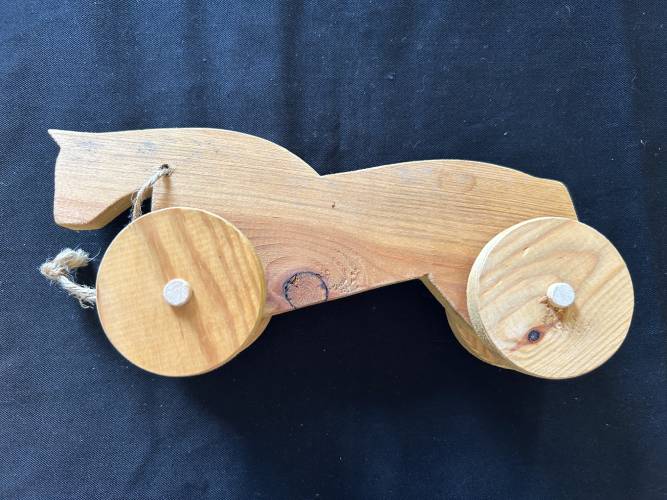
A torc, also spelled torq or torque, is a large rigid or stiff ring in metal, made either as a single piece or from strands twisted together. Many seem designed for near-permanent wear and would have been difficult to remove. They would be worn around the neck, the upper arm or the wrist in Roman times. This torc is the Roman equivalent of our modern bangle.
Most of those that have been found are made from gold or bronze, less often silver, iron or other metals.
They often determined the high ranking status of the wearer, initially thought to have been worn by women and then later high ranking males as well.

Introduced during the Republic, in the third century BC, Roman currency for most of Roman history consisted of gold, silver, bronze, orichalcum and copper coinage.
A significant advancement in coin imagery occurred when Julius Caesar issued coins bearing his own portrait. While previous moneyers had issued coins featuring portraits of their ancestors, Caesar's coinage marked the third instance in Roman history where a living individual was depicted.
The followig Roman coin hoards have been found in Kirklees:
- Honley - 18 coins dating between 126 - 73 BC
- Thurstonland - Silver coins, around 500 in total, representing Julia Mamaea, Gallienus, Victorinus, Tetricus, Probus, Carinus, Carausius, Constantius and Licinus.
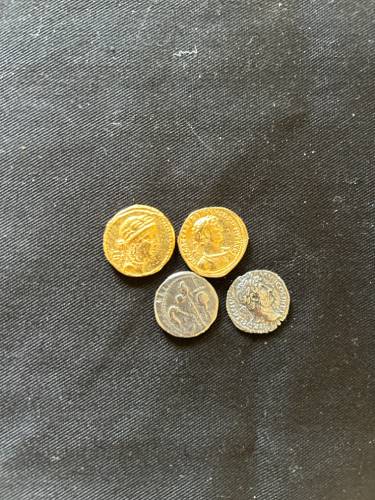
Most Roman oil lamps were made of pottery, but some expensive bronze examples also existed.
They worked by adding oil into the center and then burning wicks placed in the four corners.
This is an early example and would have been handmade.
Oil lamps would have been important in the absence ofartificial lighting.
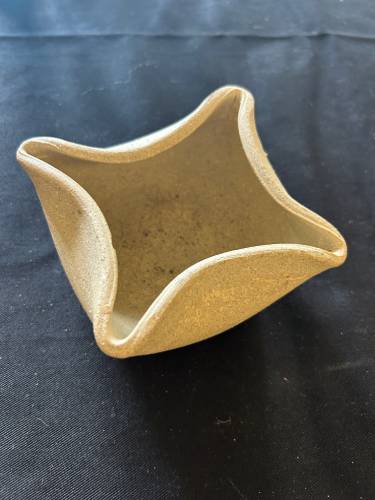
Roman glass bottles were used for storing oils,lotions, medicine, and perfumes.
The invention of glass blowing around 100 AD allowed for the production of thousands of glass bottles, making them more accessible.The tear-drop shape was commonly used for these bottles.
Ancient Roman glass objects were both functional and decorative. Roman glass artisans experimented with glass-making techniques and applied innovation to take the art of glass-making even further.
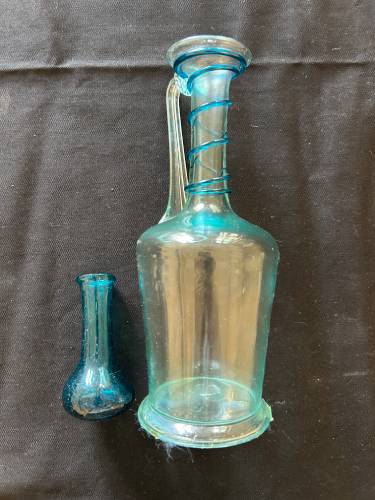
Appearance was very important to the Romans, and much time and energy was invested into presenting themselves in a way which would best reflect their wealth and status. Combs would have been important to achieving this and this double comb made from animal horn would have been used for grooming and removing lice.
Wealthy women's hair was often tended to by slaves, who themselves had their hair cut short to reflect their lower status. It is common to see women having their hair tended to by slaves depicted on gravestones, symbolising the woman's wealth, status, and beauty in life.
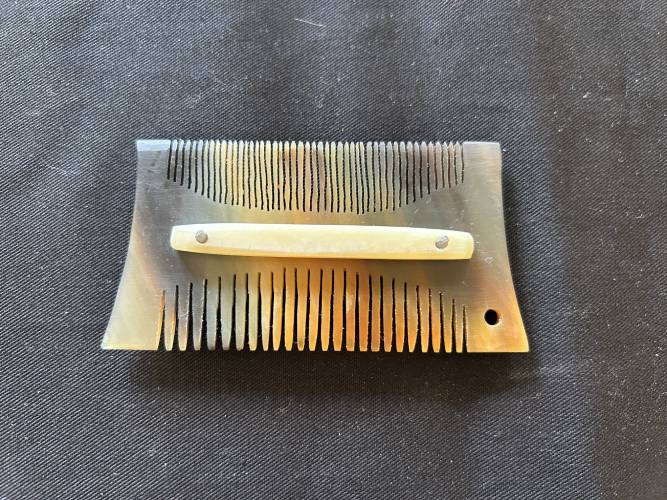
The Romans used lots of herbs and spices in their cooking, including cumin, coriander, sage, nutmeg, thyme, pepper and ginger. These were fresh, in leaf, twig or hard form.
In order to prepare these herbs and spices for cooking, the Romans had to break them down so that their flavours could be absorbed into the food.
They used the mortarium, with its rough surface, and a pestle to help the grinding process.
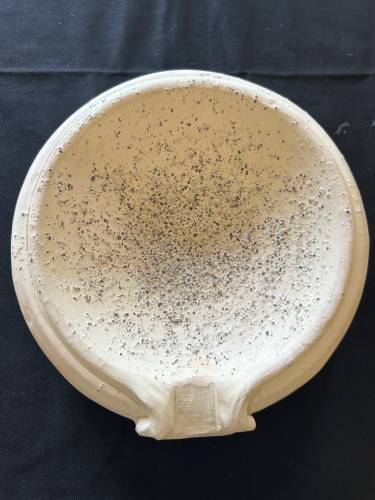
An amphora is made from pottery and used as a storage jar.
They were primarily designed to transport agricultural produce over long distances, particularly by sea, and are one of the most common finds on Roman archaeological sites.
They came in many shapes and sizes however most commonly they were large and cylindrical.
Many were excavated at the Roman fort at Slack.
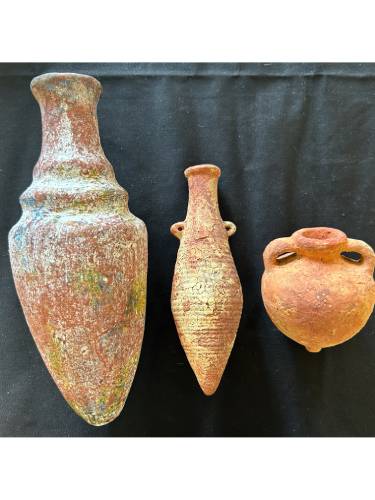
Both civilians and soldiers wore sandals. The basic style and form of sandals were mainly consistent across different social classes, and this style was known as caligae.
These were heavy-duty, with hobnailed soles. The Romans designed them to be mass-produced, comfortable, and functional. This was especially important as Roman legions (armies) had to cover vast distances by foot to stage, mobilise, and fight as the Empire expanded.
They were ideal in the warm Mediterranean climate, but would need to be worn with woven or wool socks in northern Britain.
At least 5 leather sandals have been found at Slack, likely dating from the forts occupation between 79 -140 AD.
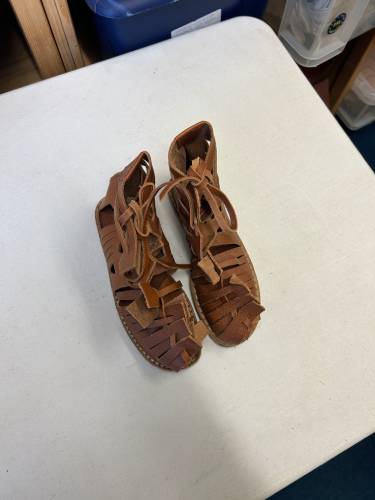
Roman dice were often used for moving pieces on a game board or gambling, which was very popular amongst ancient Romans. There were also many games which involved dice-throwing. such as one called 'taberna'.
They were often made of animal bones, antlers, bronze, lead, stone, and even semi-precious stones and amber.
Another type of Roman dice, called tali, were made from sheep or goat ankle bones - often appearing lopsided.
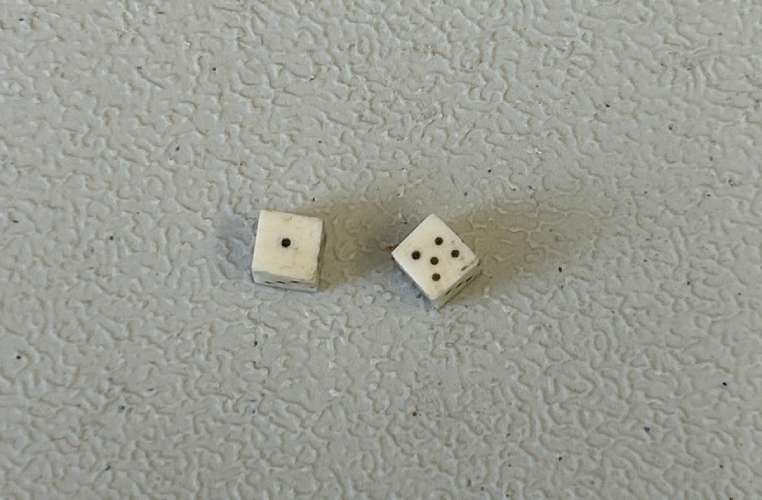
The Romans worshipped many gods, and Vulcan or Volcanus was the Roman god of fire and forge. He was the special patron of blacksmiths and artisans. Vulcan was the most feared out of all the Gods.
Being a blacksmith was a dangerous and highly-skilled trade, supporting the spread of the Roman Empire through the production of weapons. They were also producing armour, chariots, axes, hammers, ploughs and coins which helped society to function.
Like the other gods, Vulcan had a festival, the Vulcanalia celebrated on 23rd August, and a temple located outside Rome on the Campus Martius. For fear of fire (and for safety), most of his temples were located outside a city.
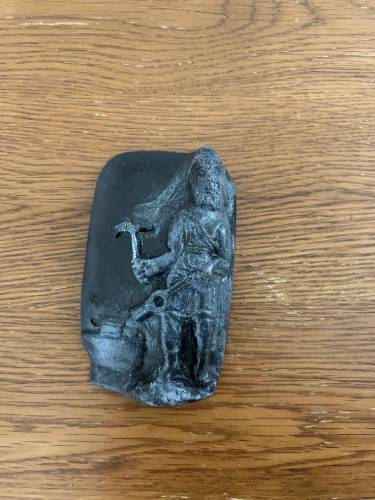
The sponge on a stick was an hygienic tool used in ancient Rome. This particular utensil served a crucial purpose in the lives of ancient Romans, providing a means to clean themselves after using the toilet.
Constructed by attaching a sponge to a woodenstick. Sea sponges were preferred because of their softness and ability to absorb moisture.
Placed in communal toilets, they would be dipped in water and vinegar, and then rinsed ready to be used by the next person.
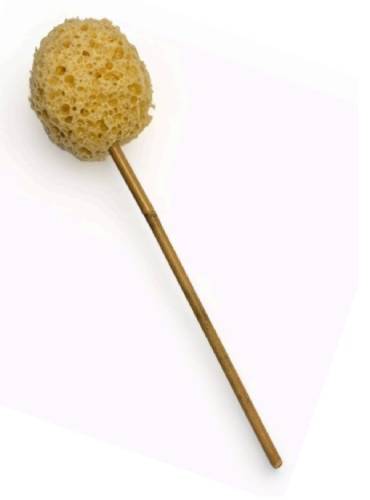
This is a much more popular version of an oil lamp; using a design that the Romans took from the Greeks. They could be hand-moulded, wheel thrown, or impressed into a mould. Some show signs of being made using a combination of these methods.
Clay lamps make up the majority of lamps found in the archaeological record and were important for artificial lighting, used by many Romans throughout the period.
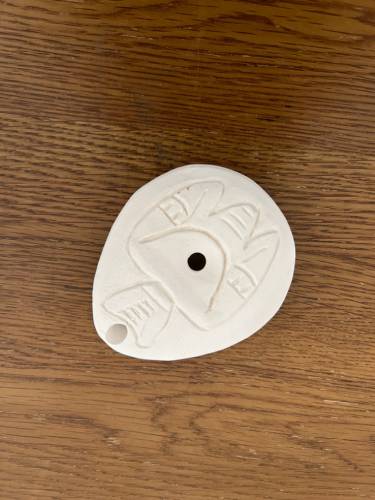
Explore the following themes using the objects
- Childhood
- School
- Home life
- Leisure time
- Sports
- Social change
- Innovation
- Technology




